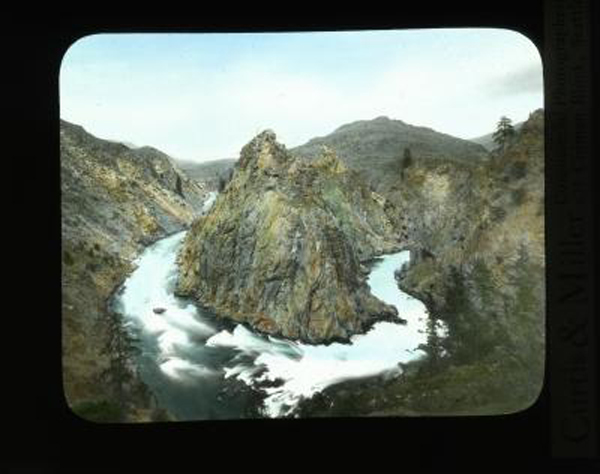Archives’ Curtis collection gets NPR’s attention
Photo courtesy of Washington State Digital Archives
If you created a short list of great photographers from the Pacific Northwest, Asahel Curtis likely would be on it. During his 44-year career that began just before the start of the 20th century, Curtis captured many stunning shots across a wide range of subjects, including downtown Seattle, the mountains and Native tribes.
Many of Curtis’ images are part of an impressive collection found at the State Digital Archives’ Conservation Department, Planning and Development Division. More of Curtis’ work can be seen in the collection at the University of Washington Special Collections and the Washington State Historical Society. Go here to learn more about the Digital Archives.
One of Curtis’ most beautiful collections is a series of colorized lantern slides. (One of the slides is of Chelan Canyon, shown above.) The unique collection caught the eye of Rich Remsberg, a researcher who produces an online feature for NPR called “Found In the Archives.” As the name suggests, it showcases interesting archival collections. Here is a link to his recent blog post about the Lantern Slide Show collection.
From Remsberg’s blog post on Curtis and his lantern slides:
In the 1920s, he was commissioned by the Washington state Department of Conservation and Development to create a series of colorized lantern slides for public presentations, designed to promote tourism and immigration to the area. The resulting hand-colored slides show interesting moments of the region’s agriculture, industry and recreation.
This type of coloring that predates Kodachrome — and what we tend to think of as more realistic color — strikes modern eyes not so much for the dimensional realism it was striving for but for its abstraction. As with black-and-white photography, the distance from “real” color in these scenes is powerful because our minds have to make a certain leap.
Sometimes the hand-coloring reaches a masterful level of accuracy, but just as often the images are beautiful because they create a world with its own integrity, either by their awkwardness or because the color they offer is better than what we experience in the real world.
